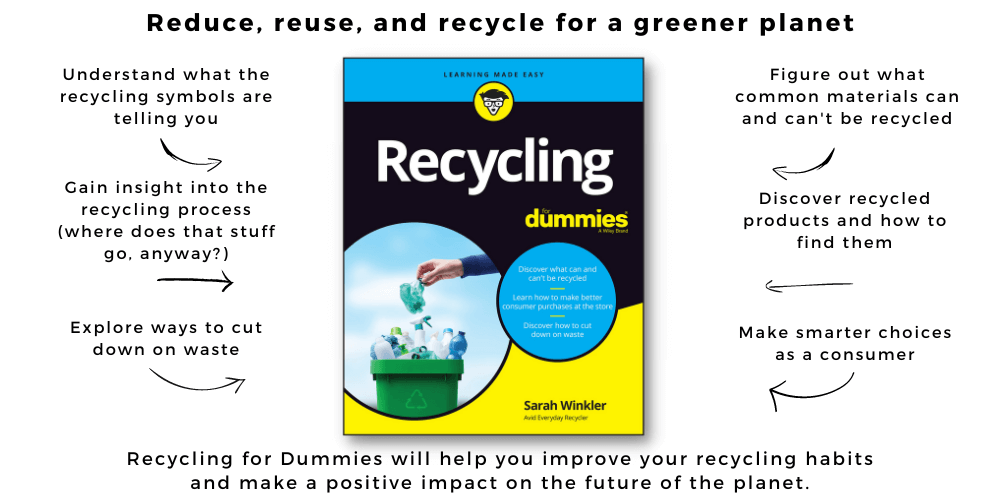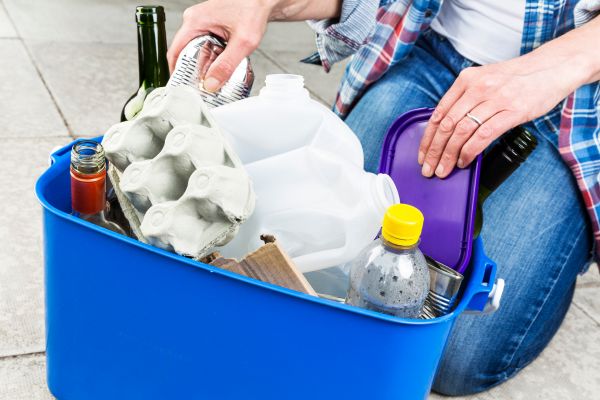REDUCING CURBSIDE RECYCLING CONTAMINATION
Approximately 20% of the material received through curbside recycling collection services doesn’t belong there and is referred to as contamination. That means one in five items placed in curbside recycling bins is incorrect. It’s a lot of items on average, but luckily you can help reduce that number.
Contamination in recycling is anything that doesn’t belong. What does that mean? Well, let’s break it down. Several different types of contamination can end up in our curbside recycling bin, including:
- The wrong item being placed in your recycling bin. This is an item that is not accepted by your local recycling service.
- When there is food or liquid left inside the items, and they are not emptied or cleaned properly.
- Placing your recycling items into a plastic bag instead of leaving them loose.
When we follow the rules provided by our local curbside recycling service provider, we can keep contamination low and create a more successful recycling system.
Many issues can be caused by contamination in your recycling bin, including:
- An entire batch of recyclables may end up being sent to a landfill.
- It can create an unsafe and unpleasant work environment for manual laborers at the plant.
- Items that don’t belong can get caught in machinery, cause safety hazards and, in rare cases, lead to the entire recycling operation plant being shut down temporarily.
- When dangerous objects, particularly lithium-ion batteries, are thrown out, there is a risk of fire.
- More effort is required to remove this material at the recycling facility, which can lead to higher costs.
- It can also lead to higher costs for the business to maintain machinery in good working condition.
- Reduced earnings for the recycling facility as they have to send more material to landfill which costs money.
In summary, contamination can reduce the likelihood that recyclable materials will be successfully recycled and turned into new products. It can also increase the costs and make the overall recycling process less economical, and it can even lead to the cancellation of recycling services.
What can you do to help?
There are many things you can do to help reduce contamination. They include:
- Follow your local rules for what goes in your recycling bin and what stays out. Check out Lesson 2 for help finding and making sense of your local rules.
- Keep your recyclables empty of solid foods and liquids, and give them a quick rinse.
- Check the list below of things that don’t belong in your curbside recycling bin and keep them out.
- Never bag your recyclables (unless your local area specifically states otherwise, for example, in New York City, some residents are asked to put their recyclables into plastic bags). In most places, the machinery at the recycling plant relies on loose items. Plus, soft plastics like plastic bags are not accepted in most curbside recycling services.
What stays out of your curbside recycling bin
- Food waste
- Tanglers. These are items that can get stuck in the machinery and cause safety issues or shutdowns. They include coat hangers, extension cords, cables, ropes, hoses, and holiday lights.
- Plastic bags or soft plastics can also get tangled in the machinery (on Lesson 9, we will show you how to figure out if your plastic item is soft or rigid plastic.
- Bulky items like furniture or other homewares.
- Electronic items like home appliances, laptops, phones, or any other item that has a battery or a plug-in power cord.
- Textiles like clothing, bedding, or carpets.
- Construction waste like wood or concrete.
- Automotive waste like old tires, scrap metal, or other auto parts.
TASK
Take a look through your curbside recycling bin and see if you can spot any of the items from the list above. If you find any, be sure to remove them and make a note to leave this item out next time.
Please note in some countries and local areas, a separate bin may be provided for some of these materials. For example, some areas in the United Kingdom collect e-waste or soft plastics at the curb. If you’re lucky enough to have these services available, please check your local rules for what is accepted in each separate bin.
Join the Facebook Group
We will cover some of the common guidelines for recycling in the next lesson.
Let’s conquer curbside recycling together.
You can jump to any of the other lessons below:
- Conquer Curbside Recycling Challenge Page
- Lesson 1 – WHAT IS RECYCLING AND WHY IS IT IMPORTANT
- Lesson 2 – FINDING YOUR RECYCLING RULES
- Lesson 3 – RECYCLING CODES AND SYMBOLS
- Lesson 4 – REDUCING CURBSIDE RECYCLING CONTAMINATION
- Lesson 5 – GETTING FAMILIAR WITH SOME COMMON RULES
- Lesson 6 – RECYCLING GLASS IN CURBSIDE BINS
- Lesson 7 – RECYCLING PAPER IN CURBSIDE BINS
- Lesson 8 – RECYCLING METAL IN CURBSIDE BINS
- Lesson 9 – RECYCLING PLASTIC IN CURBSIDE BINS
- Lesson 10 – RECYCLING CURBSIDE BINS OVERVIEW
If you liked this challenge, then you are definitely going to like my book “Recycling for dummies”. It has 384 pages filled with knowledgeable and actionable content for you to become a better recycler. Find out more here.















